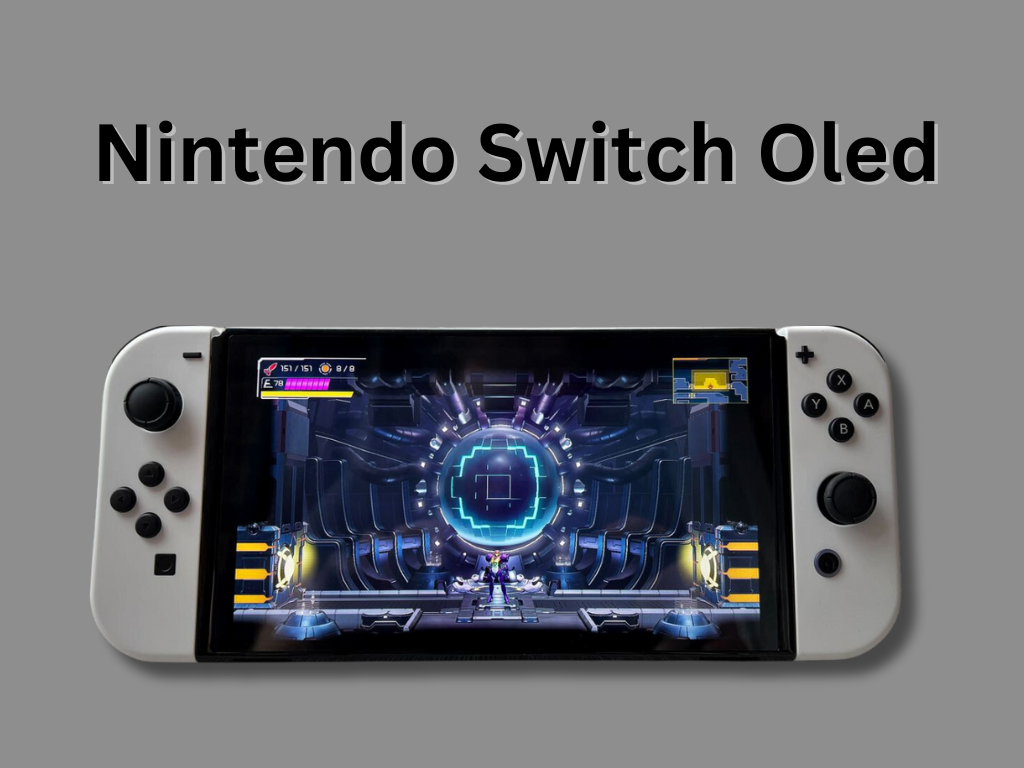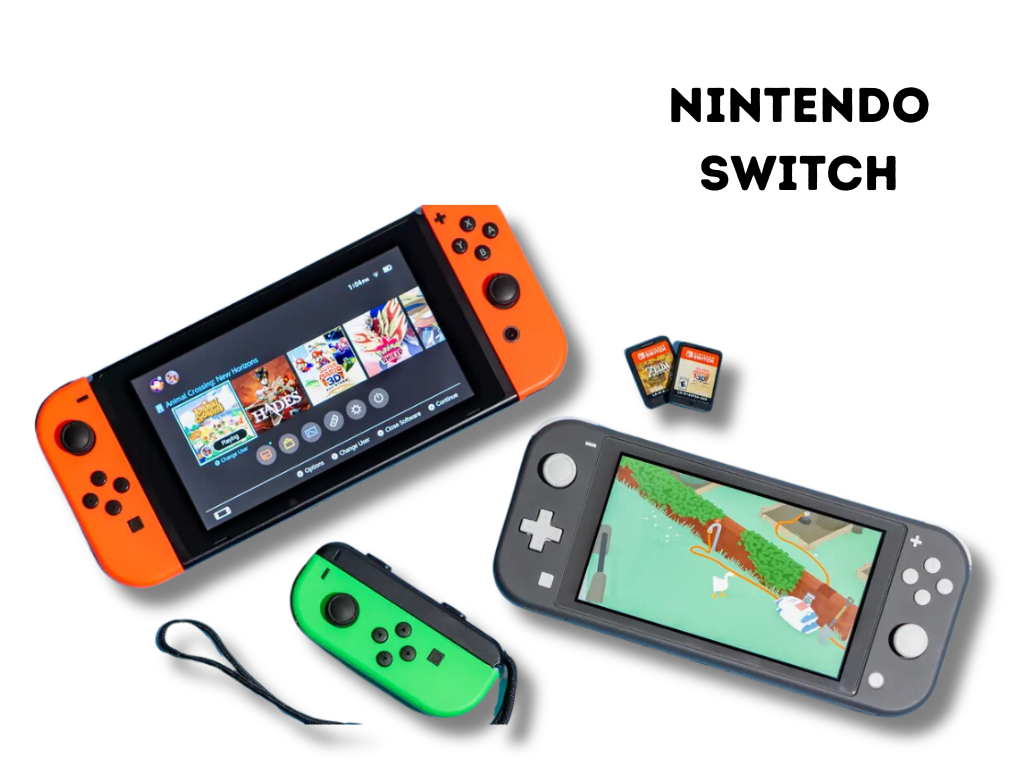If you’re into gaming and trying to decide between both, Nintendo Switch OLED Vs Nintendo Switch, this comparison breaks down everything you need to know. We’re talking about how fast they are, what’s inside them, how good the screen looks, their design, and the price. It’s like a guide for gamers to figure out which one is the better choice by considering the small improvements in the OLED model and what they already like about the original Switch.
Read on to make a smart decision in the always-changing world of gaming.
| Feature | Nintendo Switch OLED | Nintendo Switch |
| Cost | $349 | $299 |
| Screen Size | 7-inch OLED | 6.2-inch LCD |
| Screen Resolution | 1080p (TV), 720p (handheld) | 1080p (TV), 720p (handheld) |
| Console Dimensions | 4.02 x 9.53 x 0.55 inches | 4.02 x 9.41 x 0.55 inches |
| Flash Storage | 64GB | 32GB |
| Processor | Custom Nvidia Tegra X1 | Custom Nvidia Tegra X1 |
| RAM | 4GB | 4GB |
| Colors | – Black dock and red & blue Joy-Cons | – Neon blue and red Joy-Cons |
| – White dock with white Joy-Cons | – Mario red and blue edition | |
| – Splatoon edition | – Animal Crossing edition | |
| – Gray | – Gray |
1- Processing Power & Performance
The original Nintendo Switch marked a technological leap with the integration of the Nvidia Custom Tegra processor, a versatile chipset that facilitated the hybrid nature of the console. Coupled with 4GB of RAM, the system delivered a commendable performance, allowing users to seamlessly transition between handheld and docked gaming modes.
However, as the gaming industry evolved with increasingly demanding titles, the Nintendo Switch did not receive a subsequent boost in processing power. Despite the original Tegra processor’s capability, the static 4GB of RAM and the absence of a performance upgrade became more noticeable over time, especially with the emergence of visually sophisticated games that pushed the hardware to its limits.
In the case of the Nintendo Switch OLED, the trajectory remains unchanged concerning processing power. Retaining the Nvidia Custom Tegra processor and the 4GB of RAM, the OLED model does not introduce a significant performance upgrade. Games run similarly on both the original and OLED models, emphasizing compatibility with the existing game library rather than pushing the boundaries of processing capabilities.
While the OLED model introduces notable improvements in display technology, design, and additional features, the decision not to enhance processing power might leave some users desiring a more robust gaming experience, particularly as the industry continues to advance in terms of graphical fidelity and performance expectations.

2- Internal Enhancements
The original Nintendo Switch, a pioneer in the gaming industry, featured internal specifications that, while groundbreaking at the time, revealed certain limitations. Boasting 32GB of internal storage, the console provided a modest capacity for game installations and system updates. The 6.2-inch LCD panel with 720p resolution, while serviceable, lacked the visual richness and vibrancy associated with more advanced display technologies.
Additionally, the original model’s kickstand, designed for tabletop gaming, was smaller and garnered criticism for its perceived flimsiness, contributing to stability concerns during extended gaming sessions. Furthermore, the absence of an Ethernet (LAN) port on the dock limited users to relying on Wi-Fi for online gaming, potentially introducing connectivity challenges.
The Nintendo Switch OLED addresses these limitations with commendable internal enhancements. Doubling the internal storage to 64GB, the OLED model provides users with a more spacious environment for game downloads and additional content, accommodating the evolving demands of modern gaming. The introduction of a 7-inch OLED panel, while maintaining the same 720p resolution, elevates the visual experience with enhanced color reproduction and contrast ratios.
The redesigned kickstand contributes to a more stable tabletop gaming setup, addressing previous concerns about fragility. Notably, the inclusion of an Ethernet (LAN) port on the dock is a pivotal addition, ensuring a more stable and reliable internet connection for users engaged in docked mode, marking a significant step forward in connectivity options.
3- Display Technology
The original Nintendo Switch introduced gamers to a 6.2-inch LCD panel, a display technology that, while serviceable, exhibited certain limitations in color reproduction. Colors, especially blacks, often appeared slightly muted, taking on a grayish tone, particularly noticeable in scenes with low lighting. While the LCD display provided vibrant visuals and served well in handheld mode, the absence of true black representation impacted the overall visual fidelity, especially in games with darker aesthetics.
Despite these limitations, the 6.2-inch display contributed to the console’s versatility, allowing users to seamlessly switch between handheld and docked modes, offering a unique and flexible gaming experience.
In contrast, the Nintendo Switch OLED marks a substantial evolution in display technology with its transition to a 7-inch OLED screen. The adoption of OLED brings about a transformative improvement, introducing emissive pixels that enable true black reproduction. This enhancement results in deeper, more immersive blacks, elevating the visual experience to new heights.
The OLED display not only addresses the previous shortcomings related to color vibrancy but also enhances contrast ratios, delivering more vivid and lifelike visuals. This improvement becomes particularly pronounced when comparing the OLED model side by side with the original Switch, showcasing a remarkable leap in display quality that enhances the overall gaming experience.

4- Design
The original Nintendo Switch features a classic design with a vibrant Neon Blue and Red color scheme, emphasizing its versatility with removable Joy-Con controllers. However, it has thicker bezels around the 6.2-inch LCD display, contributing to a somewhat dated appearance. The small and criticized kickstand designed for tabletop gaming adds instability, causing inconvenience for users in that mode.
In contrast, the Nintendo Switch OLED maintains the classic design while introducing a sophisticated White version and reducing the bezel size around the 7-inch OLED display. This upgrade enhances the visual experience and overall aesthetics.
The OLED model also addresses the fragility of the original’s kickstand, featuring a redesigned, adjustable version that spans across much of the console’s back, providing better stability and various display angles. Nintendo Switch OLED represents a significant design improvement, offering a more modern and appealing gaming experience.
5- Price
When examining the pricing dynamics of the Nintendo Switch Vs Nintendo OLED counterpart, the original Switch initially debuted at an attractive $299, positioning itself as a versatile and affordable gaming solution.
Over time, a slight reduction in price occurred following the release of the Nintendo Switch OLED, providing a more budget-friendly option for those seeking a capable yet economical gaming console.
In contrast, the Nintendo Switch OLED comes with a premium price tag of $350, representing a $50 increase from the original Switch. This higher cost is justified by the incorporation of advanced features, including a larger and superior OLED display, doubled internal storage, a redesigned kickstand, and the addition of an Ethernet (LAN) port on the dock.
While the original Switch remains a budget-conscious choice, the OLED model targets enthusiasts willing to invest in an elevated and refined gaming experience, offering enhanced capabilities at a higher price point.
Also Read: 3 Best Bass Earbuds
Final Words
When comparing Nintendo Switch OLED vs Nintendo Switch, It’s clear that each console has its own good points and things to think about. We looked at important stuff like how fast they are, what’s inside them, how the screen looks, their design, and how much they cost.
For gamers deciding between them, it’s about thinking about what’s a bit better in the new OLED model and what they already like about the old Switch. Whether you go for the cheaper original Switch or go all-in on the fancier OLED one, the goal here is to help you make a choice that feels right for you in the always-changing world of gaming.

